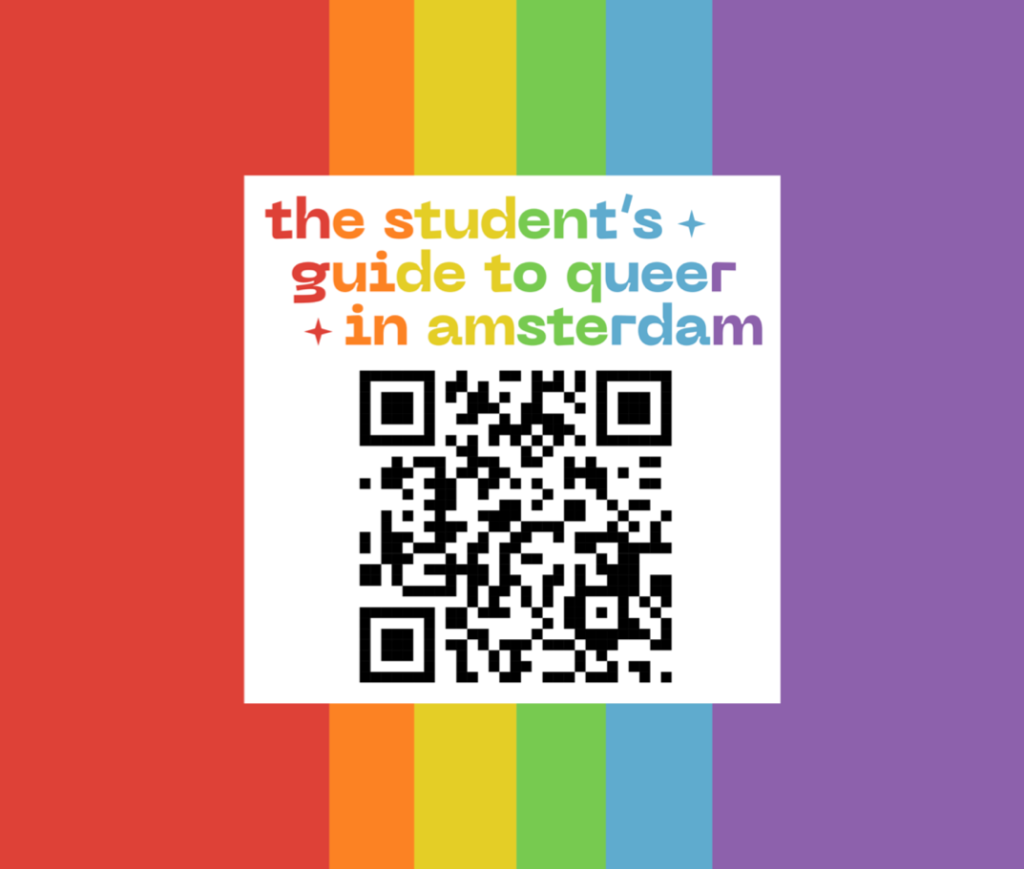
…we set out to ask this question (“Where do you feel safe being queer?”) and used the answers to create a guide of queer-friendly spaces that can be accessed by everyone.
- With the results from our survey of Amsterdam-base, often international students, we created a map of queer-welcoming places that highlight, as Eve Kosofsky Sedgwick puts it, “the open mesh of possibilities, gaps, overlaps, dissonances and resonances” (1994, 8), inherent to queerness, with tips ranging from drag queen-hosted bingo nights to lesbian bars, university libraries and monuments.
We revisit the sense of belonging and celebration attributed to the word queer in the late 1980s and early 1990s, particularly in the context of feeling safe and comfortable, as students in the space of Amsterdam. We are aware of how hard it can be for queer people to place themselves on the map of heterosexual-driven discourse in a tourist-heavy city, and how difficult it may be for new students to find their place of comfort, security and expression within its limits. For an individual, to express themselves fully is to feel a sense of safety within the community they are surrounded by, which is why the placement of queer in space is crucial to its utterance. With this in mind, we set out to ask this question (“Where do you feel safe being queer?”) and used the answers to create a guide of queer-friendly spaces that can be accessed by everyone.
With the results from our survey of Amsterdam-base, often international students, we created a map of queer-welcoming places that highlight, as Eve Kosofsky Sedgwick puts it, “the open mesh of possibilities, gaps, overlaps, dissonances and resonances” (1994, 8), inherent to queerness, with tips ranging from drag queen-hosted bingo nights to lesbian bars, university libraries and monuments. The map was then turned into a QR code sticker and placed around the city, at and around places cited by students, in order to expand its reach outside the university limits. One can find them on polls, ticket machines, doors, street lamps, at bars and cafés. We chose places that are the most accessible to students and considered this an ever-evolving map, which is why you can find an email account for submitting new tips on the description.
This project was an interesting form of discovery and exploration of the term queer and the queer scene among students. Thanks to the cooperation and engagement of the people we surveyed, it created a sense of belonging, integration and fellowship for those of us who are also part of this community. It generated meaningful conversations on the concepts of safety and comfort, and how that can be found in a place in the city, but also in a group of people.